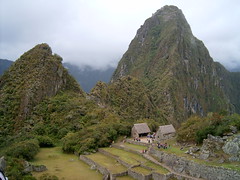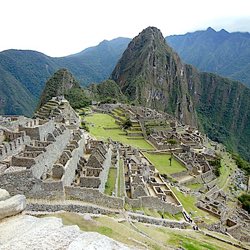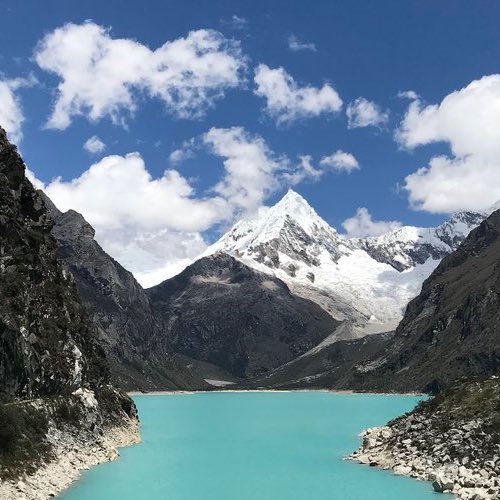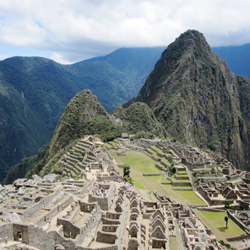
The Inca Trail to Machu Picchu is one that truly embodies the idea, “It’s the journey that matters”. While the lost city of Machu Picchu in Peru is breathtaking in itself, getting there the hard way has several hidden gems in store for the adventurous few.
But owning the Inca Trail requires quite some effort! Here are 7 tips that will help you prepare for the road ahead.
Have Your Facts Straight
 The traditional or Classic Inca Trail begins in Cusco, passes through the Inca ruins of Llactapata, Runkurakay, Sayacmarca, Phuyupatamarca, and Wiñay Wayna, and finally terminates in Machu Picchu. The trek is 26 miles (43 km) long and takes you through 4 days and 3 nights of lush cloud-forests, subtropical jungle, beautiful valleys, and Inca ruins. On the majority of tours, you return to Cusco by train on the fourth day.
The traditional or Classic Inca Trail begins in Cusco, passes through the Inca ruins of Llactapata, Runkurakay, Sayacmarca, Phuyupatamarca, and Wiñay Wayna, and finally terminates in Machu Picchu. The trek is 26 miles (43 km) long and takes you through 4 days and 3 nights of lush cloud-forests, subtropical jungle, beautiful valleys, and Inca ruins. On the majority of tours, you return to Cusco by train on the fourth day.
The highest point on the Inca Trail is the Dead Woman’s Pass at 13,828 ft or 4,215 m, which is nearly 5,905 ft or 1,800 m higher than Machu Picchu. Along with steep ascents and descents, the trek comprises a number of passes and thousands of rocky steps.
How to Prepare Physically for the Inca Trail
On the Classic Inca Trail, you’ll be averaging 7 miles (12 km) each day. The altitude and stone stairs add to the challenge, so undertaking this trek requires a basic level of fitness. This doesn’t mean you have to be an athlete, but once you’re sure you want to do this, it’s recommended to start getting physically fit for the trek.
Start a training regime 3-6 months before your trek; keep the intensity light to moderate, but prolong the duration of workouts. Focus on aerobic activities like walking, running, cycling, and swimming to strengthen your cardiovascular system. Also, train your legs and upper body with lunges, lightweight squats, and step aerobics, and shoulder presses, sit-ups and back and shoulder flies.
Note that mental stamina is going to be equally important for you to push through the trek. Prepare by challenging yourself to participate in and complete half marathons or triathlons that are organized in and around your city. A couple of mountain hikes – preferably with a weighted backpack – in your home country will give you an idea of what to expect on the Inca Trail.
Inca Trail Map with Elevation
- Get a universal plug adapter
- Buy Travel Insurance
- Search for Great Tours HERE
- Get an eSim to be able to use your smartphone abroad.
- Book Your Accommodation HERE
- Get a Car Rental

Map from Cachi Inca Trail Tours
Don’t Ignore Altitude Sickness
Altitude sickness or acute mountain sickness is caused due to exposure to low levels of oxygen at altitudes of over 8,000 ft or 2,400 m above sea level. Symptoms manifest within hours of arrival at high altitudes and may include headache, shortness of breath, and nausea. Mild cases are usually self-treatable and resolve in 1-3 days, but some may be life-threatening.
While altitude sickness can affect anyone irrespective of age, gender, or physical fitness levels, individuals with sleep apnea and heart or lung problems are at a higher risk for feeling its effects. So be sure to check with your doctor before you consider taking this trip of a lifetime.

Give Yourself Time to Acclimatize
Cusco itself is 11,152 ft or 3,399 m above sea level. So if you’re taking a flight to Cusco from a lower elevation, you’re bound to feel altitude sickness. You might want to consider taking a 21-hour bus ride from Lima instead, so you get to ascend slowly. But avoid this option if you’re prone to motion sickness.
Either way, just give yourself enough time to acclimatize before your trek, and you’ll be fine. Spend a minimum of two days in Cusco before you begin your trek. Refrain from going on long walks or exerting yourself during this time. Stay hydrated, eat light meals, avoid alcohol, relax, and keep taking deep breaths.
Proper Footwear for the Inca Trail
Hiking boots offer a greater degree of ankle support than other types of hiking footwear, and you’re going to need all the support you can get on the rugged Inca Trail. If you already have a good pair of hiking shoes, you can invest in ankle supports that can be secured with laces and/or Velcro. Check out your local drugstore well before your trip.
When buying new shoes, ensure to get the perfect fit- footwear should neither squish your feet nor be too loose. Bear in mind that feet swell during the day, so head out to purchase shoes in the evening.
Most importantly, new shoes can make your trek extremely uncomfortable. So break in your footwear well by wearing them around the block, around town, and on practice hikes.
Pack Light
Depending on your trek organizer, you will likely be trekking in a group, accompanied by guides, chefs and porters. These porters carry camping equipment and personal belongings of each trekker in the group. As such, you only need to carry a backpack with you that holds drinking water, your camera, and some essentials.
Since porters can carry limited weight for each trekker, make sure you don’t exceed the limit. If you have to carry your own bags, here’s a list of things you’ll need on the trek.
Inca Trail Packing List
- Sleeping bag
- Sleeping mat
- Thermals
- Layers in quick-drying fabrics
- Waterproof jacket and pants
- Underwear and socks
- Trekking footwear
- Insoles
- Handwash and sanitizer
- Toothbrush and toothpaste or mouthwash
- Sunscreen
- Moisturizer
- Lip balm
- Insect repellent
- Medicines and bandages
- Toilet paper
- Wet wipes
- Sunglasses
- Earplugs
- Hat or cap
- Knee and ankle support
- Walking poles
- Torch
- Camera and batteries
- Notebook/journal and pen
- Snacks
- Water bottle
Lastly,
Book in Advance
The Inca Trail is one of the world’s most famous trekking routes owing to its splendid views of the Andes mountain range and glorious Incan ruins. Due to concerns about overuse that could lead to erosion, the Peruvian government has placed a limit on the number of hikers on this trail.
Since only 500 people are allowed on the Inca Trail each day – only 200 of them being trekkers, and the rest guides and porters – peak season books out quickly. Bookings are managed officially and you might have to book your spot up to 6 months in advance.
If this has got you all pumped up, don’t wait any longer. Go on and explore the magnificence of the Inca empire the right way.
Leave a Reply
Tags: adventure travel, article, hiking, inca trail, machu picchu, peru, trekking

 Heading to Machu Picchu? Why You Should Explore the Ruins Around Cusco First
Heading to Machu Picchu? Why You Should Explore the Ruins Around Cusco First Planning a Trip to Machu Picchu, Peru For First Timers
Planning a Trip to Machu Picchu, Peru For First Timers Hiking Peru – Where to Hike, Tips for Hiking
Hiking Peru – Where to Hike, Tips for Hiking Travel to Peru – Episode 349
Travel to Peru – Episode 349
